At one time, Euchre was the most popular of any card game played in the United States. It is still quite popular, great fun and widely played in many locales.
The standard game of Euchre is played by 4 players, in two partnerships consisting of two players each.
It is played with a modified Euchre deck consisting of 32 cards. This deck consists of one card from each suit (♠,
♥,
♦,♣) in the following denominations: Ace, King, Queen, Jack, 10, 9, 8 and 7.
The ranking of these cards for the game of Euchre is, from highest to lowest, A, K, Q, J, 10, 9, 8, 7. However, the ranking of cards may change somewhat in certain suits dependant on the suit specified as the trump suit for each hand (see below).
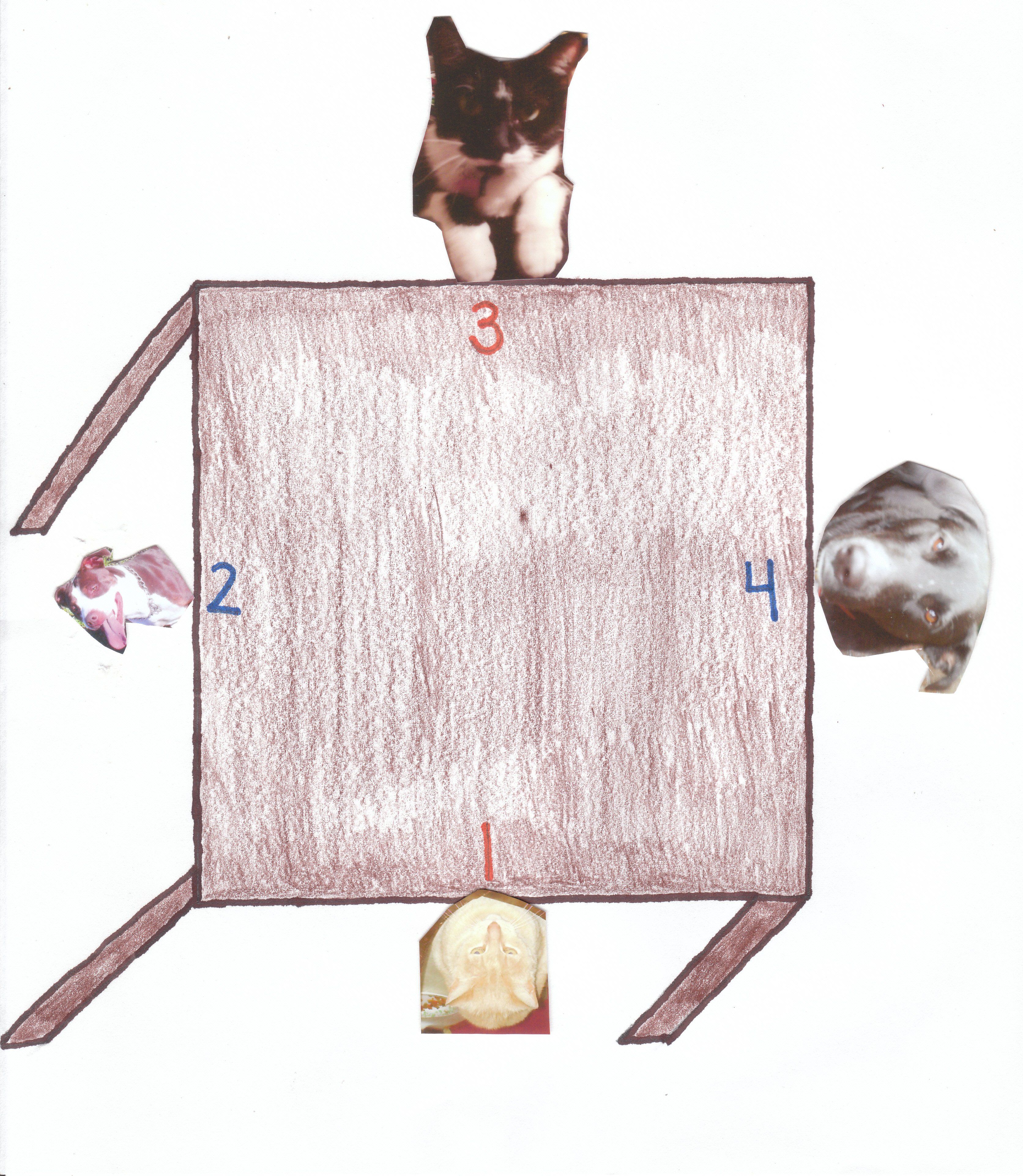
|
|
Partners should sit directly across from each other at the table when playing Euchre. Thus, players one and three would play as partners against the opponent team consisting of players two and four.
|
Unless partnerships have been prearranged in some manner, the first order of business should be to determine the partnerships and the first dealer. All four players should draw one card from the shuffled, face down deck. The players drawing the two lowest cards become partners against the players drawing the two lowest cards.
The player drawing the very lowest card (according to the standard ranking) becomes the first dealer. During this draw, if two or more players draw equally ranked cards, these players should draw again. If they again draw a card matching another player, these players would continue drawing until all players have cards of different denominations. The partnerships, once determine, will then remain until the end of the game, at which time new partnerships can be decided. The partnerships should seat themselves at the table directly across from each other, such that the play of the hand will alternate between members of each partnership.
After the partnerships are determined as well as the first dealer, this individual should then thoroughly shuffle the deck and offer it to the player at his right hand to cut. This player will cut and then return the deck to the dealer. The dealer will then proceed to deal the hands to the players. Beginning with the player to his immediate left, he will distribute the cards to each player. Each player should receive five cards face down. This can be done by first dealing a round of three cards in rotation around the table and then a batch of two, or this can be reversed with a batch of two then followed by a batch of three. Once each player has five cards, the dealer will then deal the next card face up from the deck onto the table. This card, depending on the course of the bidding phase of the hand, may indicate the trump suit for the hand.
Determination of trump suit: Beginning at the player to the dealers immediate left and continuing clockwise around the table, the players will then have the opportunity to declare if they want to make the turned up card the trump suit (this is called the turn up). This continues with each player, including dealer who is last, having this opportunity to decide if the turned up cards suit will be the trump suit for the hand. If any player indicates this suit should be the trump suit, the play of the hand begins. At this point the dealer immediately discards any one card from his hand face down under the undealt remainder of the pack and takes the turned up card into his hand.
However, if all four players decline the suit of the turned up card as the trump suit, a round of "bidding" begins, again starting with the player to the dealers immediate left. Starting with that player, and continuing in a clockwise rotation, each player has one opportunity to designate a suit of their choice as the trump suit. Obviously, no player may declare the trump suit to be the same as that originally turned up and declined by all players. If any player names a suit, this "bidding" round ends and play of the hand begins. In this case, the dealer does not take the turned up card into his hand. In this round of bidding a player is not obligated to name a suit and may pass, not declaring any suit. If all four players pass, the cards are thrown in, the cards shuffled and deal passes to the next player with no score occurring for this hand. Whichever way the trump suit is determined, the partnership of the player who either "accepted" it or declared one is now considered the "maker".
The Trump Suit and Ranking of Cards: The trump suit determined will have an effect on the ranking and number of cards within that suit and the other suit of same color as trump suit. For this hand, the Jack of this other suit of the same color is actually considered to be part of the trump suit. For all purposes during the hand, this Jack should be considered a trump suit and played in any circumstance calling for the play of the trump suit. It is no longer considered a portion of the other suit for this hand. Thus the ranking of the cards in this trump suit are as follows (from high to low): Jack of the trump suit, Jack of opposite suit (but same color) as trump suit, King of trump suit, Queen of trump suit, Ten of trump suit, 9 of trump suit, 8 of trump suit and 7 of trump suit. The ranking of the cards in the opposite suit is as follows (with the Jack no longer being considered to be included in this suit): Ace, King, Queen, 10, 9, 8, 7. In the two suits of the alternate color, the standard Euchre ranking of the cards applies (A, K, Q, J, 10, 9, 8, 7).

|
|
Example trump suit when Spades is trump for the hand.
|
As an example, say that Spades has been declared to be the trump suit. In this case, the trump suit would consist of the following cards, in order from highest to lowest; Jack of ♠, Jack of ♣, Ace of ♠, King of ♠, Queen of ♠, 10 of ♠, 9 of ♠, 8 of ♠, 7 of ♠.
The members and ranking of the club suit for this hand (from high to low) would be as follows: Ace of ♣, King of ♣, Queen of ♣, 10 of ♣, 9 of ♣, 8 of ♣, 7 of ♣.

|
|
Example of the opposite suit (in this case clubs) if spades were trump.
|
The ranking of the cards within the Diamond (
♦) and Heart (
♥) suits would be, from high to low: Ace, King, Queen, Jack, 10, 9, 8, 7.
See the illustration above which shows an example where Spades has been declared the trump suit.
Play of the Hand: The game is now played out in a series of 5 tricks. The makers partnership attempts to win as many of these tricks as possible, and the opposing partnership attempts to "set" the makers partnership by preventing them from winning these tricks. The player to the dealers immediate left leads the first card to the first trick (which may be any card of his choice from his hand). The play to the trick proceeds in a clockwise rotation, with each player playing one card to the trick on their turn. Each player must play a card of the same suit as was led to the trick if able. However, if they do not have a card of the suit led, they may play a trump card to the trick. If they do not have a trump or do not want to play one, they may play a card of any other suit to the trick. The highest trump card played to the trick wins it. If no trump was played to the trick, the highest card of the suit led to the trick wins it. The winner of the trick should remove these cards from play and leads the first card to the next trick. These cards won in tricks but should be removed from play (face down), but should be noted which partnership won the trick to determine if that partnership was able to win the required number of tricks in the hand.
Solo Play: The player who originally determined the trump suit for the hand, the maker, may indicate he wants to play the hand alone. In this case, his partner should immediately discard his hand face down to the table. The maker will then play the hand by himself against both players of the opposing partnership. In this case the player to the makers immediate left leads to the first trick. Playing alone can increase scoring possibilities on the hand, but is also much more difficult as he must play without any help from his partner during the hand.
Scoring: After all five tricks have been played, the scoring of the hand proceeds, with the following scoring possibilities:
- If the makers partnership (with both partners playing) wins all five tricks (called march) their partnership score 2 points
- If the maker playing solo wins all five tricks (march) the partnership scores 4
- If the makers partnership (with both partners playing) wins three or four tricks the partnership scores 1 points
- If the maker playing solo wins three or four tricks, the partnership also scores 1 point
- If the makers partnership (with both partners or playing solo) wins less then three tricks the opponents partnership scores 2 points (the partnership is said to have been euchered)
|
The first partnership to score 5 or more points is declared the winner. For a longer game, this is sometimes increased to 7 or 10 points. As in contract bridge and whist, Euchre is sometimes played in rubbers. In this way the partnerships should stay the same for the duration of the rubber. The first partnership to win two games wins the rubber.
Score Indicators: For convenience, the score for each partnership in Euchre is often displayed by using some of the unused lower rank cards from the deck, with the number of spots displayed indicating a partnerships current score. Thus, in a 5 point game, the unused threes and fours from the deck would be used by each partnership to mark their score. The following illustration shows such an example.
 Euchre Vocabulary
Euchre Vocabulary: Euchre has a number of words and phrases that are often used by regulars to the game. Below are some of the more common terms that a Euchre player may encounter:
- When a solo player or partnership scores all 5 possible points in a hand, this is called
march.
- When a solo player or partnership wins less than 3 tricks in a hand, they are said to have been
euchered (which earns the opposing partnership 2 points).
- The Jack of the trump suit which is the highest card in the deck is called
right bower.
- The Jack of the other suit of the same color as the trump suit, which is considered the second highest card of the trump suit, is called the
left bower.
- If an opponent accepts the turn up cards suit as trump for the hand, this is usually indicated by the player saying
I order it up.
- If the partner of dealer accepts the turn up card as the suit designator for trump, this player usually indicates this by saying
I assist.
- If the dealer accepts the turn up card as the trump suit designator, he usually does not say anything, but usually just indicates this by exchanging a card for the turn up card. This is called
taking it up.
- If the dealer refuses the turn-up when all other players have also, this is called
turning it down.
- If a player declares as trump the alternate suit of the same color as that originally turned up, this is called
making it next.
- When a suit of the opposite color as that originally turned up but rejected as trump is selected to be the trump suit for the hand, this is called
crossing it.
Euchre for varying number of players
Euchre for Three: Three handed Euchre (also called Cutthroat Euchre) is played very similar to the standard four player game described above. Each player is dealt the same number of cards in the same manner, and bidding proceeds amongst the three players as normal. The major difference for three players, is that the maker always plays solo against the other two players. Thus, the scoring for three handed Euchre is as follows:
- If maker wins all 5 tricks he scores 3 points.
- If maker wins 3 or 4 tricks, he scores 1 point.
- If maker is euchred (wins 3 or less tricks), both opponents each score 2 points.
All other rules are played the same as in standard four hand Euchre described above.
Euchre for Two: This variation is also very similar to standard four hand Euchre, with a few differences:
- From the special Euchre pack additional cards are removed. All sevens and eights are removed from this pack, leaving a 24 card deck. The ranking of cards (for both trump suit and the non trump suits) remains the same as in standard Euchre minus the sevens and eights.
- Obviously, a player can never make the declaration "alone" as they are already playing solo.
- Scoring for two hand Euchre is as follows:
- Maker wins all five tricks (March) - 2 points
- Maker of trump scores 3 or 4 tricks - 1 point
- Maker scores 3 or less tricks - opponent scores 2 points
All other aspects of two handed Euchre are the same as in standard, four hand Euchre.
Railroad Euchre

A number of differing variations were added to Euchre under the name Railroad Euchre. Most of these variations were designed to speed up the game, often such that a game could be completed on a short train commute. One or more of the following variant rules can be added, which will provide for a somewhat shorter game.
Joker Addition: One joker is added to the standard Euchre deck described above. This joker is considered the highest card of the trump suit, with the remainder of the trump suit (and all other suits) exactly the same as in standard Euchre.
Defending Alone: This version allows a defender to play alone if the maker opts to play alone. Either defender has the right to declare this, however the defender who is the first in line for the next deal in the hand has the first opportunity. If this happens, the other defender then places his hand face down on the table, not to be used in the hand. Scoring is the same as in standard Euchre, however if the lone defender is able to euchre the maker, his partnership scores 4 points.
Call for Best: In this variation, a lone player may discard one card face down to the table and call for his partners best card in replacement. If the Defending Alone rule is used, a lone defender can also ask for this privilege.
Laps: When playing using Laps, a winning side may overlap any score over that needed for the game towards the next game. Thus, if a partnership had 4 points in a game to 5 and they were able to score march (win all five tricks) on the next hand they would score 2 points. One of these points would be used to win this game (total of 5) and the other point would be carried over to the next game giving them a start of 1 point for that game.
Slams: If a partnership wins a game before the other side has scored any points in this game, they are considered to have won two games rather than just one (a slam).
Jambon: This variant rule, sometimes called Ham Bone, allows a a partner playing alone to elect to play with his hand face up, completely exposed on the table. A player able to score all 5 possible points for the hand (March) with his cards exposed in this way earns 8 points for the feat. He scores normal for winning 3 or 4 tricks. Optionally, some players enforce the rule that the first opponent of the Player can state the opening lead the Player must make from his exposed hand to the first trick.
Auction Euchre
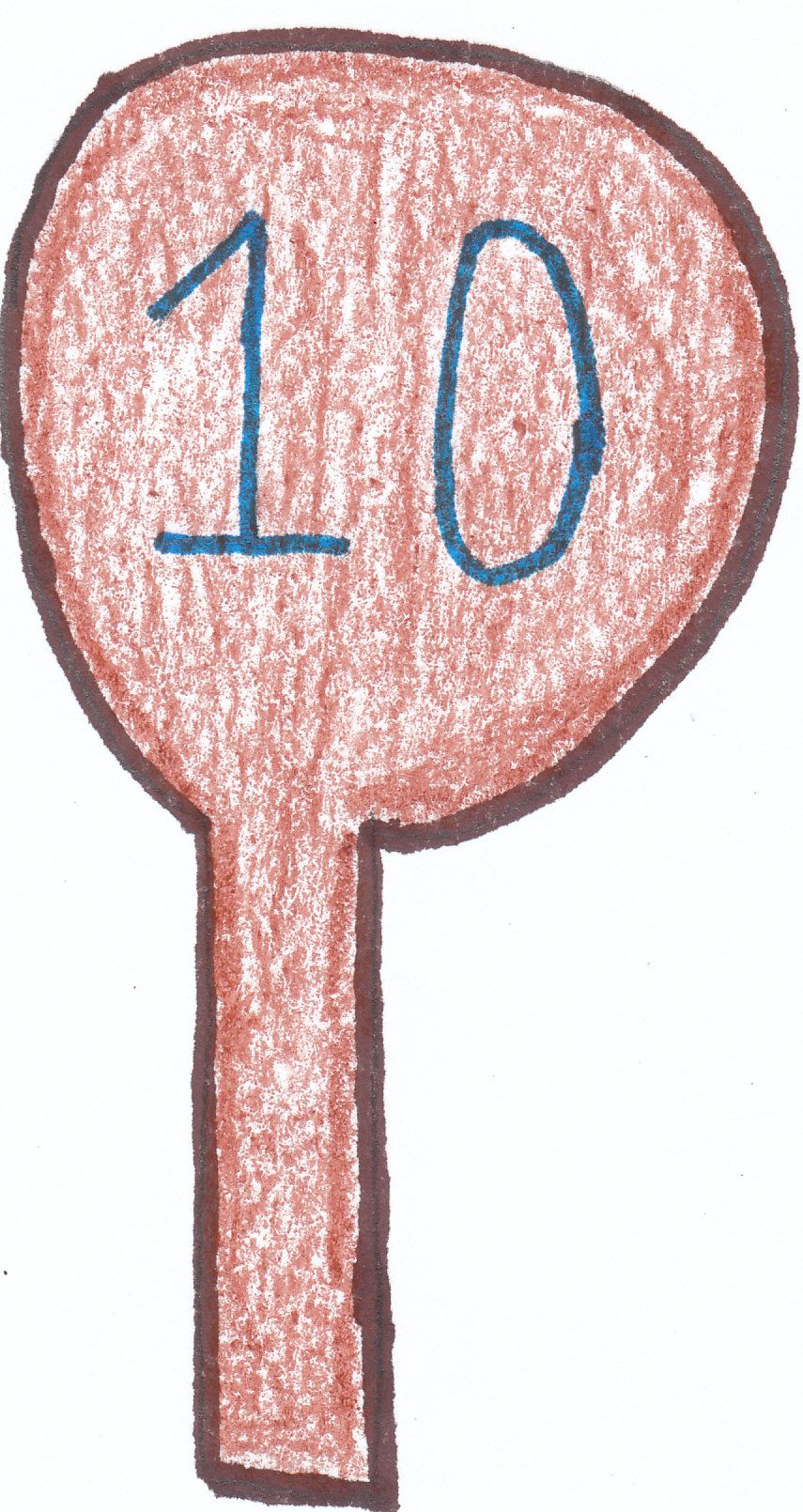
Auction Euchre is a variation of the basic game where there is no turn-up, with each player instead making one bid. The rank of cards (both in the trump suit and the other suits) is exactly the same as in standard Euchre. Auction Euchre can be played by 5, 6 or 7 players, with the specific rules for each given below:
Five Handed Auction Euchre: In five hand Auction Euchre the standard 32 card Euchre deck is used. To determine dealer and seating positions, each player should draw one card from the face down, spread deck. The player drawing the lowest card is the first dealer, the next lowest card sits to his immediate left, with the next lowest at that players left, and so on. After each hand, the deal passes to the next player in a clockwise rotation.
The dealer deals out the cards similarly to standard Euchre, in a batch of 3 face down cards to each player, then a batch of 2 or he may reverse the order. After all players have been dealt their hands, the dealer deals two more face-down cards to the center of the table as a widow.
After all cards have been dealt one round of bidding occurs. Each player is given one opportunity to bid, starting with the player to the dealers immediate left and going clockwise around the table. On his turn to bid a player either names a bid or may pass. His bid would indicate a number of points and his bid must be higher than any previous bid. The specific number bid will determine a number of things regarding the play of hand. See the table below for the allowable bids and what this bid contracts the player for in the hand. After each player has had one opportunity to bid, the player who bid the highest number now may name the trump suit. After doing so, he takes the two card widow into his hand and discards any two cards from his hand face down to the table, out of play.
If the bid made allows the selection of one or two partners (see chart below), that player may now select these partners. The specific number allowed to be selected is directly dependant on the specific score he bid.
- If he bid 3 tricks, he is allowed to select one partner.
- A bid of 4 or 5 tricks entitles him to select two partners.
- If bidding 8 or 15, the player must play solo (no partners).
The maker may select any such other player or players as his partner, regardless of their position at the table.
Once selected, play then begins with the player to the current dealers immediate left leading the first card to the first trick. The play of the hand is identical to standard four hand Euchre. The scoring for the hand, and the specific requirements to make the contract are as per the following table:
| Bid | Won Tricks Needed | Number of Partners Allowed | Additional Conditions |
|---|
| 3 | 3 | 1 | May use Widow |
| 4 | 4 | 2 | May use Widow |
| 5 | 5 | 2 | May use Widow |
| 8 | 5 | None | May use Widow |
| 15 | 5 | None | May not use Widow |
If the player is able to win using the conditions for his bid, he and his partners each score the amount of his bid . If he does not score the number (or more) each opponent scores the bid number.
Six Hand Auction Euchre: This variation is similar to five hand Auction Euchre with the following exceptions:
- The deck is composed of 36 cards. This consists of the standard Euchre deck with the addition of the sixes. The rank of the trump suit and the other suits is the same as in other forms of Euchre, with the six being the lowest card of each suit.
- This is usually played in two partnerships of three players each. These partnerships can be pre-determined or selected by having all players draw from the spread deck. The three highest cards playing as partners against the players drawing the three lowest cards. When seated at the table, the partners should be arranged in alternating seats around the table.
- As in all other forms of Auction Euchre, a player may bid any of the following totals, with the indicated requirements for the hand:
| Bid | Tricks Needed | Conditions |
|---|
| 3 | 3 | May use Widow |
| 4 | 4 | May use Widow |
| 5 | 5 | May use Widow |
| 8 | 5 | May use Widow |
| 15 | 5 | May not use Widow |
When the widow is used, it is taken by the maker (high bidder who determines the trump suit).
As in five handed Euchre, points won by the makers side or the opponents in case of being euchred, are equal to that of the bid.
- The partnerships remain the same for the duration of each game, and one score is kept for each of the two partnerships.
All other rules are the same as that with five handed auction Euchre.
Seven Hand Auction Euchre: This game is also played very similarly to five handed auction Euchre with a few exceptions, as follows:
- Seven hand Euchre uses the standard 52 card deck. The rank of the trump and other suits is the same as in standard Euchre, with the added cards having their expected ranking (with the two being the lowest ranked card in each suit).
- Each hand consists of seven cards to each player. This can be dealt in a round of three face down cards to each player followed by a round of four or in the opposite order. After the first round of cards is dealt, a face down widow consisting of three cards is dealt face down to the center of the table.
- As in the five handed variant of auction Euchre, the number of partners (if any) is determined by the makers specific bid. The following table shows the possible bids and the conditions required of such a bid:
| Bid | Tricks Needed | Number of Partners Allowed | Additional Conditions |
|---|
| 4 | 4 | 1 | May use Widow |
| 5 | 5 | 1 | May use Widow |
| 6 | 6 | 2 | May use Widow |
| 7 | 7 | 2 | May use Widow |
| 10 | 7 | None | May use Widow |
| 20 | 7 | None | May not use Widow |
|
|
|
If the maker (and any temporary partners for the hand) are able to win at least as many tricks as bid, the maker and any partners each score the amount of the bid individually. If the maker (and any partners) is euchred, the opposing players each score the amount the maker had bid, added to their individual score.
In all other aspects, seven hand auction Euchre is played identically to the five hand version.
Auction Euchre with Jokers: Any of the versions of auction Euchre described above can be played with the addition of one joker. When played with this joker, the rules are essentially the same, with a few differences:
- The Joker ranks as the highest trump card. The remainder of the trump suit and the other suits, all rank as in standard Euchre.
- The widow in the seven hand variant consists of four vice three cards. The maker, if using the widow, would then discard any four cards after taking the widow into his hand.
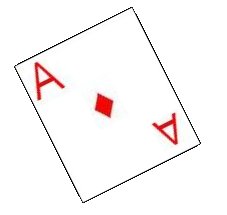 Call Ace Euchre
Call Ace Euchre: This variation can be played by four to six players. However partnerships are not determined before the start of the deal as this information will be unknown until well into the hand.
The cards are dealt as in the standard four hand version as well as the determination of trump suit. However when examining his hand a player will not yet be sure who might end up being his partner should he become the maker.
Once the maker is determined by the normal method, he then names any suit (it need not be the trump suit). Whichever other player (unbeknownst to the maker) who has the highest ranked card in the named suit becomes the makers partner. However, this player, should he be aware that he is the actual holder of the highest card of the named trump should not state this. Thus it will not be immediately known who the makers partner is until later in the hand (or possibly not until the end of the hand).
The scoring in Call Ace Euchre is the same as in the standard version, however since the partnerships are liable to change each hand, each independent player in the temporary partnership is awarded the score that would normally be awarded to the partnership as a whole. The first player to reach or exceed the designated total for game, is declared the winner. If two players reach this same total at the end of the hand, they are considered co-winners of the hand.
 Bald Euchre
Bald Euchre: Bald Euchre is an exciting variation that was first played about 15 years ago in California. It is unique, featuring several differences from the parent game.
The primary difference in this game is the handling of the Left Bower. Whereas in Standard Euchre the Left Bower is considered to simply be an additional card of the selected trump suit, in Bald Euchre the Left Bower is considered to be part of its displayed suit.
It is played by the holder as a member of the suit actually marked on the face of the card, but is still considered a trump card with its normal ranking (between the right Bower and the Ace of the actual selected trump suit).
As an example, if Spades was the selected Trump suit, the Left Bower would be the Jack of Clubs, retaining is normal ranking right below the Jack of Spades. However, the card could be played to a Club lead as a member of the suit of Clubs. Being a Trump, this card would be considered the highest card of the Club suit beating any other clubs played as well as any lower valued trump suit cards. It would not be permissible to play that card to a Spade lead unless the holder had no other Spades in hand, in which case they could play the card and it would retain its ranking for purposes of card values in the trick.
Another difference in this game is in the procedure if the turned up card designating the trump suit is rejected. Instead of a round of bidding as in standard Euchre, in Bald Euchre, a second card is then turned up from the pack and placed on top of the previously exposed card. Each player, starting again with the player to the dealers immediate left, has an opportunity to accept the trump suit or turn it down. As in the first card turned up, if anyone (including the dealer) accepts the turned up card, the dealer may (but is not required to) exchange this exposed card for any card in his hand, placing his discard face down under the unused remainder of the deck. This can continue until a suit is repeated. Once this occurs, the bidding procedure immediately begins, at which time the players participate in the bidding round as in the standard game. However, no suit which was turned down may be declared as the trump suit for this hand. If all suits were previously exposed with no player accepting it, the cards are thrown in and a new deal is performed by the next dealer in turn.
In all other aspects, this game is played the same as the base game Euchre.

|
|
Example of Clubs as Trump Suit in Hasenpfeffer.
|
Hasenpfeffer:
Hasenpfeffer is another fun variation of Euchre that is played with a 25 card deck by four players in two partnerships. The deck for this game is created using the normal Euchre deck (which consists of a stripped down standard deck), but also includes the addition of one Joker. The rank of the cards is similar to standard Euchre with the only difference being the Joker. In Hasenpfeffer, the Joker is always considered to be the highest card in the trump suit. Thus, in the trump suit, the ranking is as follows: Joker, Jack of Trump suit (right bower), Jack of opposite suit from trump suit (left bower), Ace, King, Queen, 10, 9. Even though the left bower and Joker are not actually marked with the suit of the trump suit, they are considered, for all purposes to be members of the Trump suit. In the non trump suit of the same color as the trump suit the ranking is: Ace, King, Queen, 10, 9. This other suit of the same color is called the opposite suit. In the two non-trump suits of the opposite color, the ranking is; Ace, King, Queen, Jack, 10, 9.
Determination of partners, seating positions and first dealer are the same as in standard Euchre. The deal is somewhat different, however. The dealer deals six face down cards to each player, in packets of thee cards at a time in a clockwise rotation around the table. The last card is then placed face down in the center of the table as a widow. Bidding then begins with the player to the immediate left of the dealer and continues in a clockwise rotation around the table with each player passing or bidding the number of tricks they believe their partnership can win (up to a maximum of six). Each player mush either bid a higher number than any previously bid or pass. After three consecutive passes after a bid, the player making the high bid becomes the bidder and earns the privilege of naming the trump suit for the hand.
If all players pass, the player who holds the Joker must instantly bid three and becomes the bidder, who names the trump suit. In this circumstance, if no player holds the Joker (it being the widow card), all the cards are thrown in with no score and the next dealer in turn deals the next hand. In addition, the high bidder takes the one card widow into his hand and discards any card from his hand face down. This card is set aside and takes no further part in this hand.
The player to the immediate left of the dealer leads the first card to the first trick and each subsequent player must play a card of the suit led. If he has no card of that suit, he may play any card from his hand including a trump. The highest trump card played to a trick wins, or if there are no trump cards in the trick, the highest card of the suit led wins the trick. The winner of each trick leads the first card to the next trick.
If the high bidder and his partner manage to win as many tricks (or more) than their high bid, they score one point per trick won. If they are unable to score at least as many tricks as their bid, they lose one point for every trick they have won in the hand. Negative scores are possible and common in Hasenpfeffer. The defending partnership always wins one point per trick won during the hand whether the high bidders reach their bid or not. The scores for each hand are counted at the end of the hand, with the bidders score totaled first. This detail may be important, as if both sides reach the winning total on the same hand, the bidders side would be declared the winner as their score is calculated first. The first partnership to score 10 points over any number of hands wins the game.
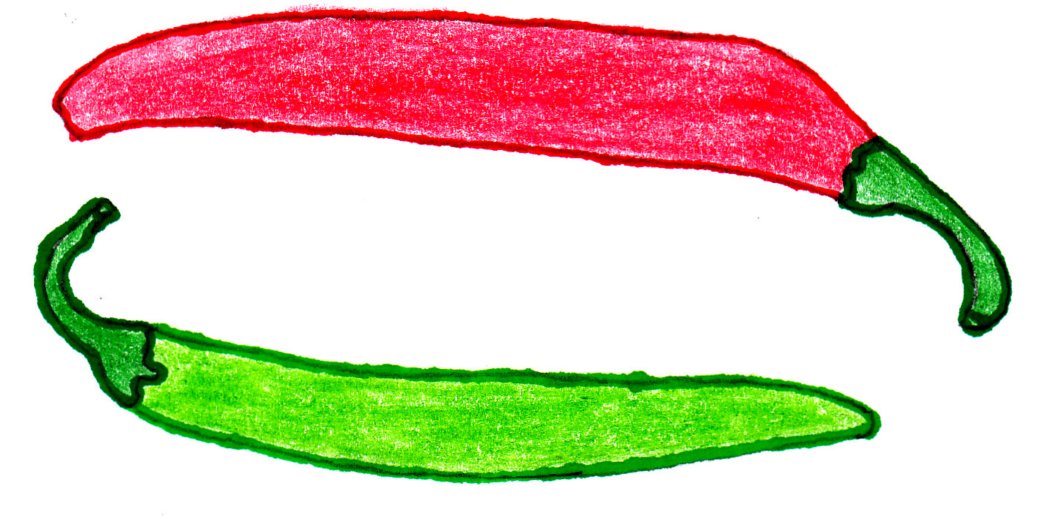 Pepper
Pepper: This game is similar to Hasenpfeffer in most respects with a few key differences which will be described.
The first difference is that in Pepper, the Joker is not added to the deck, thus resulting in a 24 card deck with the same ranking (minus the Joker) as in Hasenpfeffer. In addition, no widow card is dealt to the center of the table.
The bidding is also somewhat different than the parent game. In Pepper, the maximum normal bid is five, with two additional bids also being allowed. These additional bids are called "Big Pepper" and "Little Pepper". Little Pepper is a bid to win six tricks using normal stakes. A bid of Big Pepper is a bid to win six tricks with double stakes for the hand. As expected a bid of Little Pepper exceeds a bid of five or lower and Big Pepper exceeds any bid of Little Pepper or lower. Once a player passes, he may no longer make further bids in the current hand and must pass on each subsequent bid on the current hand.
Rather than naming one of the four trump suits, the high bidder has an alternative option. Instead of naming a particular suit as trump, he may instead declare the hand be played at No Trump. In this case no trump suit will be used for the hand, and all suits rank in the expected order; Ace, King, Queen, Jack, 10, 9.
The game continues until one side earns 30 total points. If both partnerships earn 30 or more on the same hand, the team with the higher total wins. If this is also a tie, the winning bidders side on the last hand is the winner.
In all other respects Pepper is played the same as Hasenpfeffer.
Double Hasenpfeffer: This is another fun Euchre variant that is commonly played in Pennsylvania Dutch country. Although somewhat different from Hasenpfeffer, Double Hasenpfeffer is sometimes also called just Hasenpfeffer.
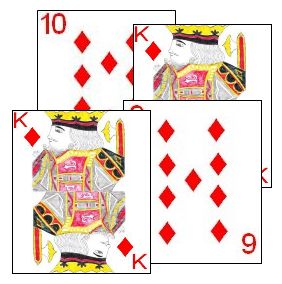
|
|
When two cards of the same suit are played to a trick, the first played is considered the higher card.
|
Double Hasenpfeffer (also called Hawsey, Hausey and sometimes Double Bid Euchre) is played using a 48 card Pinochle deck. This deck consists of two of each card in each suit in the following denominations; Ace, King, Queen, Jack, 10, 9. The ranking of the cards in this game is identical to that in the standard game of Euchre (including the Bowers in the trump suit).
The game is designed to be played by four players, playing in the usual two partnerships of two players each. The players should be seated in such a way around the table such that players of both partnerships alternate. Determination of partnerships and first dealer can be done using any of the standard methods. Once the first dealer is determined, he deals the entire deck, such that each player ends up with twelve cards. He deals in a clockwise rotation around the table, usually distributing the cards in packets of four face-down cards at a time to a player.
The bidding then begins with the player to the dealers immediate left. The minimum bid is six and a player must pass or bid a higher number then any previous bid. A players bid equates to the minimum number of tricks a player thinks his partnership can win. Each player has one opportunity to bid with the player who stated the highest bid then naming the trump suit and he and his partner become the bidders for the hand. If a player thinks he can win all 12 tricks he bids 12 and instantly becomes the high bidder. A player bidding 12 then has the privilege of exchanging any two cards for his partners two best cards immediately after declaring the trump suit for the hand and then playing the hand solo against the two opponents. His opponent would simply discard his own hand face down on the table after the card exchange.
The play of the hand is very similar to standard Euchre with the first lead being made by the high bidder, and each player, in turn, playing one card to the trick. A player must play a card of the suit led if able. If the player does not have a card of the suit led, they may play any card from their hand, including a card of the trump suit. The highest trump card played to a trick wins it, but if no trump have been played to the trick, the highest card of the suit led wins the trick. In the instance where two cards of the same suit and rank are played to the same trick, the first of the two led would be considered the higher card. The winner of each card leads to the next trick.
If the partnership (or solo player in the case of a bid of 12) is able to win at least as many tricks as bid during the hand, they earn one point per trick won during the hand. If a lone player is able to win at least as many as their winning bid, their side earns two points per trick won. If a partnership does not win at least as many tricks as bid, they lose 12 points (one point per trick in the deal). Negative scores are possible in this game. The defending partnership scores one point for each trick they win during the hand. The scores are counted at the end of the hand, with the bidding partnership counting first. The first team to earn 52 or more points is declared the winner of the game.
Six Player Double Hasenpfeffer: Double Hasenpfeffer can also be played by six participants in two partnerships consisting of three players each. The partners should sit around the table in such a manner that the play will alternate between players from each partnership during the play of the hand.
The game is played identically to four player Double Hasenpfeffer, however, each player would receive only 8 cards in each hand. Thus, the maximum bid would be 8 and any player bidding 8 would play solo, and allowed to exchange any two cards to each partner for the two best cards that partner possesses. All other rules are identical to the standard four player version of the same game.
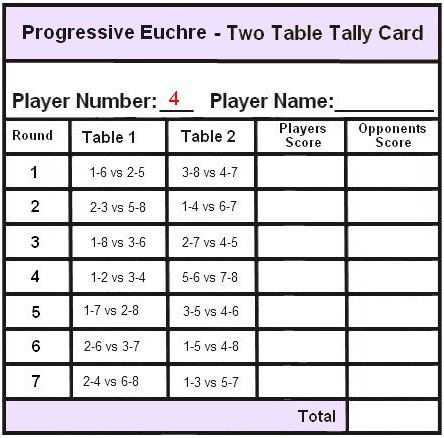
|
|
Example tally card for a game of Two Table Progressive Euchre.
|
Progressive Euchre: Progressive Euchre is not so much a variation on the game itself but rather a method by which a larger group of players could compete in a session of Euchre or even hold a small tournament. Progressive Euchre thus allows multiple tables of Euchre (with the standard four players per table) to be played simultaneously.
In Progressive Euchre, at each table 4 deals are performed, with each player at the table dealing one time. The first dealer can be determined in the normal way and the rules for those four deals are the same as in standard Euchre with the exception that there is no limit to the total points a partnership can accumulate during the four deals. Once the four deals are completed at every table, the players would then record their scores for the game and move to the next predetermined table and seat, resetting their score to 0 for the next game. This movement is detailed on a tally card that should be given to each player before the session begins. These tally cards can be distributed in some random fashion or assigned by the session leader. Before this distribution, each tally card should be marked with a player number (1 to 8 for two tables or 1 to 12 for 3 tables). The following links contain printable versions of the two and three table tally cards for playing Progressive Euchre:
Two Table Tally,
Three Table Tally.
Each tally card would then contain that players assigned number as well as details the movement of the players from game to game. Other than the player number, each tally card is identical. The card also contains space for the players name, score and opposing partnerships score for each game which is filled in as the individual rounds are completed. Progressive Euchre is usually played with two or three full tables, but can sometimes be extended to four or more tables. The following charts show the normal player movements for two and three tables of Progressive Euchre:
| Two Table Arrangement | | Three Table Arrangement |
| Game | Players - Table 1 | Players - Table 2 |
|---|
| 1 | 1-6 vs 2-5 | 3-8 vs 4-7 |
| 2 | 2-3 vs 5-8 | 1-4 vs 6-7 |
| 3 | 1-8 vs 3-6 | 2-7 vs 4-5 |
| 4 | 1-2 vs 3-4 | 5-6 vs 7-8 |
| 5 | 1-7 vs 2-8 | 3-5 vs 4-6 |
| 6 | 2-6 vs 3-7 | 1-5 vs 4-8 |
| 7 | 2-4 vs 6-8 | 1-3 vs 5-7 |
|
|
| Game | Players - Table 1 | Players - Table 2 | Players - Table 3 |
|---|
| 1 | 1-2 vs 3-4 | 5-6 vs 7-8 | 9-10 vs 11-12 |
| 2 | 2-6 vs 3-11 | 7-9 vs 8-10 | 1-5 vs 4-12 |
| 3 | 4-11 vs 7-12 | 2-9 vs 3-8 | 1-6 vs 5-10 |
| 4 | 2-12 vs 5-9 | 3-7 vs 4-8 | 1-11 vs 6-10 |
| 5 | 1-7 vs 4-10 | 3-9 vs 5-11 | 2-8 vs 6-12 |
| 6 | 3-10 vs 5-12 | 1-8 vs 2-7 | 4-9 vs 6-11 |
| 7 | 6-8 vs 9-11 | 2-4 vs 10-12 | 1-3 vs 5-7 |
| 8 | 3-6 vs 7-10 | 1-4 vs 9-12 | 2-11 vs 5-8 |
| 9 | 1-10 vs 8-11 | 3-12 vs 6-9 | 2-5 vs 4-7 |
| 10 | 1-12 vs 6-7 | 4-5 vs 10-11 | 2-3 vs 8-9 |
| 11 | 1-9 vs 7-11 | 2-10 vs 3-5 | 4-6 vs 8-12 |
|
The players should be seated at the table in such a manner that the partners are seated opposite each other. Each row of the appropriate table above shows the partnerships for each round. The player listed in the first position for each table and round would deal the first hand of each game. Thereafter the deal would rotate in a clockwise rotation around the table. After the full number of games are played, the player with the highest cumulative score for the entire session would be declared the overall session or tournament winner.
Copyright © 2015 CatsAtCards.com. All rights reserved.




 A number of differing variations were added to Euchre under the name Railroad Euchre. Most of these variations were designed to speed up the game, often such that a game could be completed on a short train commute. One or more of the following variant rules can be added, which will provide for a somewhat shorter game.
A number of differing variations were added to Euchre under the name Railroad Euchre. Most of these variations were designed to speed up the game, often such that a game could be completed on a short train commute. One or more of the following variant rules can be added, which will provide for a somewhat shorter game. Auction Euchre is a variation of the basic game where there is no turn-up, with each player instead making one bid. The rank of cards (both in the trump suit and the other suits) is exactly the same as in standard Euchre. Auction Euchre can be played by 5, 6 or 7 players, with the specific rules for each given below:
Auction Euchre is a variation of the basic game where there is no turn-up, with each player instead making one bid. The rank of cards (both in the trump suit and the other suits) is exactly the same as in standard Euchre. Auction Euchre can be played by 5, 6 or 7 players, with the specific rules for each given below: Call Ace Euchre: This variation can be played by four to six players. However partnerships are not determined before the start of the deal as this information will be unknown until well into the hand.
Call Ace Euchre: This variation can be played by four to six players. However partnerships are not determined before the start of the deal as this information will be unknown until well into the hand.



